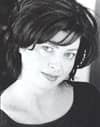
When I was growing up in Rosedale, Queens, NY, the Ringling Bros Barnum & Bailey Circus was undoubtedly the greatest show on Earth. Each year, you could expect to see something novel and awe-inspiring—lion tamers performing new tricks, tightrope walkers going longer distances, and trapeze artists more daring than the year prior. But being a finite event, there were many who got shut out of the circus; not to mention all those youngsters whose families couldn’t afford the tickets.
I was one of the lucky ones. My dad, a New York City police officer, just had to sign up for venue duty and voil?! His four kids got ringside seats.
This November, the medical imaging community will gather in Chicago for our greatest show. The industry anticipates exciting innovations across every modality. In digital x-ray, for example, expect to see compact, portable units that can perform multiple functions or remote radiography/fluoroscopy systems. Women’s imaging promises a host of new techniques ranging from ultrasound and MR to best ways to detect ductal carcinoma in situ (DCIS). And PACS manufacturers are focused on advanced visualization (AV) technology.
Manufacturers will be jumping through hoops to impress providers with their latest offerings. Radiologists, cardiologists, and researchers will be juggling presentations to deliver new insights and gain fresh ones. But all of us in the medical imaging community will be walking a tightrope, trying to find ways to balance innovation with access.
While industry leaders take center stage at RSNA, it’s good to know that other players across the United States are setting the stage for greater access to care for children, the elderly, and the poor.
Consider, for example, recruiting efforts aimed at enticing physicians to underserved areas. According to a study by the State University at Albany School of Public Health’s Center for Health Workforce Studies, a crisis is looming in rural areas and cities like Binghamton, NY, if they don’t do a better job of recruiting family physicians as well as specialists like gastroenterologists and radiologists.
While the study found 6% growth in the number of doctors practicing medicine in the state from 2001 to 2005—a total of 77,000 new doctors—the majority of those new doctors choose to set up practice in New York City or its close suburbs. Senator Charles Schumer took notice of the study and introduced legislation aimed at directing $200 million in federal funds toward recruiting efforts, from providing grants to doctors who choose to practice in underserved areas to developing programs for young people considering careers in health care.
On the other side of the country, there is a new initiative know as Healthy San Francisco—the first effort by a locality to guarantee care to all its uninsured. Efforts are first made to qualify patients for Medicaid or other state and federal insurance programs. But those left over receive a Healthy San Francisco card that makes them eligible for primary care, dental exams, mental health and substance abuse services, hospitalization, prescription drugs, and yes, radiology.
It’s important to shine a spotlight on these sideshows now and then because any one of them might emerge a star. Successful grassroots initiatives can become models for the next step in quality care.
What really makes for the greatest show on Earth? A forum that offers unprecedented products, plus genuine promise for all. An event that presents not only scientific insights, but also solutions for society. When it comes to quality health care, everyone deserves a ringside seat. So step right up and tell me what you’re doing to make medical imaging not just bigger and better ? but more available. That’s the greatest feat of all.
Marianne Matthews, editor




